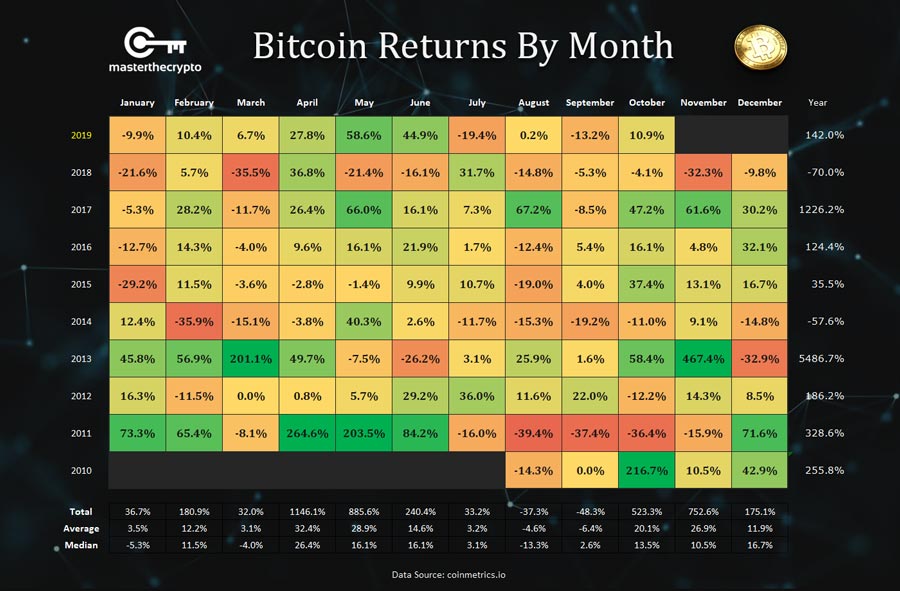
Has surprised: Bitcoin value vs usd
| How many millionaires has bitcoin created | 0.02 ltc in btc |
| Bitcoin value vs usd | |
| EARN 10 BITCOINS PER 1 DAY 2017 | |
| Elon musk erfinder bitcoin | 749 |
Bitcoin Price Today: BTC/USD Exchange Rate Value Guide

Live Real-Time Bitcoin Price in BTC/USD Exchange Rate Value
The most asked question in today's cryptocurrency ecosystem is: what is the price of Bitcoin.

This bitcoin price guide is split up into four major analysis to understand how the BTC/USD exchange value rate works. First is the live real-time BTC price chart above, followed by these three core components:
- what the bitcoin exchange rate means (how the pricing formula of BTC in USD updates)
- most popular economic crypto market factors driving the price of bitcoin up (or down)
- historical bitcoin price timeline of events with chronological dates and BTC in USD news
What Does Bitcoin (BTC) Price’s USD Exchange Rate Mean?

As we look at the bitcoin chart analysis of the last month's price in bitcoin, it is extremely significant to know the obvious, in that exchange rates play a crucial role in currency trading.
However, some people may not fully understand how exchange rates work. Today, we’re explaining everything you need to know about how bitcoin exchange rates work and how the price of bitcoin is determined.
The bitcoin network has been running for nearly 4,000 days (December 17, 2019 to be exact) since the open-source peer to peer BTC blockchain software began.
A decade ago, one bitcoin was worth less than a penny. Today, one bitcoin is worth around $10,000 and has an all time high of just under $19,900 BTC/USD. Clearly, bitcoin’s exchange rate has fluctuated wildly over the years as the volatility has even saw not one, not two, but three different 80% drawbacks down from previous chart highs.
The most demanding questions we will supply answers to are the following:
- How is an exchange rate like BTC/USD calculated?
- What types of factors go into the exchange rate?
- Why do exchange rates change?
- What causes bitcoin’s exchange rate to fluctuate wildly with volatility?
- What determines if bitcoin’s exchange rate goes up or down?
- Who sets bitcoin’s exchange rate and its USD calculation?
- Why are some fiat currency exchange rates fixed while others are floating?
- what was the past history price of bitcoin from 2009 to 2019?
- what are the bitcoin exchange rate value gains and losses month by month, year by year?
- what are the most common questions about the price of bitcoin measured in USD value?
We hope the cryptocurrency community is ready for this one-of-a-kind bitcoin price guide.
Here is a simple bitcoin price to USD conversion calculator as well as an easy way to exchange BTC for USD.
Contents
- 1 Live Real-Time Bitcoin Price in BTC/USD Exchange Rate Value
- 2 What Does Bitcoin (BTC) Price’s USD Exchange Rate Mean?
- 3 BTC Price Chart Gains/Losses Month by Month, Year by Year
- 4 Top 20 Factors Influencing the Price of Bitcoin
- 5 Bitcoin Price History: Year by Year Timeline Overview
- 6 Historical Bitcoin Price Timeline of Events with News Dates
- 7 Bitcoin Price (BTC in USD) Values in 2019
- 7.1 $5,599 = April 23, 2019: BTC Reaches A Five-Month Peak
- 7.2 $5,412 = April 10, 2019: BTC Pushed Past the $5,000 Price Level
- 7.3 $4,152 = March 31, 2019: BTC Ended March Above $4,000 Price Level
- 7.4 $3,867 = February 28, 2019: BTC Kept Up A 10% Incremental Rise, Month-Over-Month
- 7.5 $3,461 = January 31, 2019: CBOE BTC ETF Proposal Officially Withdrawn Before Resubmission
- 7.6 $3,773 = January 1, 2019: Bitcoin Started the Year at Under $4,000
- 8 Bitcoin Price (BTC in USD) Values in 2018
- 8.1 $3,469 = December 3, 2018: Mining for Bitcoin Became Unprofitable
- 8.2 $4,275 = November 15, 2018: Bitcoin Cash’s Hard Fork Creates ABC and Satoshi’s Vision
- 8.3 $6,415 = October 31, 2018: Bitcoin’s Whitepaper Turned Ten Years Old
- 8.4 $6,497 = October 15, 2018: Fidelity Enters Crypto Trading Arena for Institutional Investors
- 8.5 $6,539 = September 18, 2018: Zaif Crypto Exchange Succumbed to Hack Worth $60 Million
- 8.6 $6,516 = September 5, 2018: Goldman Sachs Announces No More Bitcoin Trading Desk Launch
- 8.7 $6,366 = August 7, 2018: Delay on SEC’s Decision to Rule on Bitcoin ETF Announced
- 8.8 $6,337 = August 3, 2018: Bakkt Launch Announced by Intercontinental Exchange
- 8.9 $7,275 = July 26, 2018: Winklevoss Twins Second Gemini Bitcoin ETF Proposal Rejected by SEC
- 8.10 $8,227 = July 16, 2018: Blackrock and Bitcoiners Hopes of Exploring Cryptocurrency Fund
- 8.11 $6,656 = June 26, 2018: Facebook’s Ban on Cryptocurrency-Related Advertisements Lifted
- 8.12 $5,928 = June 20, 2018: Bithumb Cryptocurrency Exchange Was Hacked
- 8.13 $6,709 = June 11, 2018: Subpoenas Were Filed Against Four Crypto Exchanges by US CFTC
- 8.14 $7.609 = May 24, 2018: Criminal Probe by US DOJ Over Bitcoin Price Manipulation Allegations
- 8.15 $8,372 = May 11, 2018: UpBit Raided by Prosecutors in South Korea
- 8.16 $8,729 = May 2, 2018: Goldman Sachs Starts Exploring Bitcoin Trading Solution Possibility
- 8.17 $7,127 = March 26, 2018: Ban on Cryptocurrency Advertisements Issued by Twitter
- 8.18 $8,570 = March 14, 2018: Ban on Cryptocurrency Advertisements Issued by Google
- 8.19 $8,344 = March 7, 2018: New and Existing Cryptocurrency Exchanges Required By SEC
- 8.20 $8,211 = January 31, 2018: Modified Ban on Cryptocurrency Ads Issued by Facebook
- 8.21 $8,775 = January 26, 2018: Coincheck Freezes Withdrawals After Largest Recorded Bitcoin Hack
- 8.22 $8,776 = January 13, 2018: 80% of All Bitcoin Has Been Mined
- 8.23 $10,685 = January 8, 2018: Korea Regulatory Proceedings Cause Drastic Fall in Bitcoin
- 8.24 $13,870 = January 2nd, 2018: Peter Thiel Reportedly Purchased Large Numbers of Bitcoin
- 8.25 $17,163.38 = December 28, 2017: South Korea’s Authorities Close Exchanges to Stifle Crypto
- 9 Bitcoin Price (BTC in USD) Values in 2017
- 9.1 $19,783 = December 18, 2017: Bitcoin Reached All-Time High Value
- 9.2 $17,010.53 = December 11, 2017: Bitcoin Futures Contracts Were Introduced by CBOE
- 9.3 $7,844 = November 8, 2017 – Segregated Witness Proposal (SegWit2x) Officially Cancelled
- 9.4 $7,255 = October 31, 2017: Bitcoin Futures Contract Launched by CME Group
- 9.5 $5,943 = October 13, 2017: Bitcoin Broke $5,000 Price Level for the First Time
- 9.6 $3,714 = September 15, 2017: Bitcoin Crypto Exchanges in China Ordered to Shutdown
- 9.7 $3,807 = September 12, 2017: CEO Jamie Dimon of JPMorgan Chase Called Bitcoin a “Fraud”
- 9.8 $4,224 = September 3, 2017: Initial Coin Offerings Banned in China
- 9.9 $3,384 = August 1, 2017: Bitcoin Splits Through Hard Fork into Bitcoin and Bitcoin Cash
- 9.10 $1,215.69 = April 1, 2017: Bitcoin Recognized in Japan As A Legal Currency
- 9.11 $1,038 = March 10, 2017: SEC Denies Bitcoin Exchange Traded Fund by Winklevoss Brothers
- 9.12 $807 = January 3, 2017: Bitcoin Passed $1,000 Price Level for First Time in Three Years
- 10 Bitcoin Price (BTC in USD) Values in 2016
- 11 Bitcoin Price (BTC in USD) Values in 2015
- 11.1 $461 = December 8, 2015: Reports by Wired Claim That Satoshi Nakamoto is Craig Wright
- 11.2 $334 = November 3, 2015: Unicode Accepted Bitcoin’s Symbol
- 11.3 $366.67 = October 31, 2015: The Economist Features Bitcoin on Front Page for the First Time
- 11.4 $318.43 = October 22, 2015: EU Decides Not to Impose a VAT on Bitcoin Trades
- 11.5 $268 = October 5, 2015: Winklevoss Twins Launched Gemini Exchange in New York
- 11.6 $238.15 = September 18, 2015: CFTC Classified Bitcoin as a Commodity
- 11.7 $232.05 = June 3, 2015: BitLicense Introduced By New York for Crypto-Trading Within the State
- 11.8 $222.85 = January 26, 2015: Coinbase Launched Itself as Platform for Bitcoin Trading in US
- 11.9 $198.59 = January 4, 2015: Bitstamp Hack Resulted in $5.2 Million Loss
- 12 Bitcoin Price (BTC in USD) Values in 2014
- 12.1 $324.87 = December 11, 2014: Bitcoin Accepted by Microsoft
- 12.2 $387.40 = October 6, 2014: BearWhale Bitcoin Transaction Filed by Bitcoin Exchange
- 12.3 $528.88 = July 18, 2014: Bitcoin Accepted by Dell
- 12.4 $628.50 = June 27, 2014: US Government Auction Sold Off 30,000 Bitcoin
- 12.5 $592.28 = June 13, 2014: 51% Bitcoin Network Control Temporarily Secured by GHash.io
- 12.6 $501.70 = April 10, 2014: Exchange-Related Bank Accounts Shutdown by People’s Bank of China
- 12.7 $453.05 = March 26, 2014: Bitcoin Will Be Taxes, According to IRS
- 12.8 $631.25 = March 6, 2014: Dorian Nakamoto Identified as Satoshi Nakamoto by Newsweek
- 12.9 $662 = February 24, 2014: Mt. Gox Suddenly Shut Down
- 12.10 $626 = February 7, 2014: Mt. Gox and Other Exchanges Endured Major DDoS Attack
- 13 Bitcoin Price (BTC in USD) Values in 2013
- 13.1 $839 = December 5, 2013: Financial Institutions in China Banned from Bitcoin Use
- 13.2 $921 = November 29, 2013: Mt. Gox Recorded $1,242 Bitcoin Value
- 13.3 $1,075 = November 20, 2013: Chinese Citizens Allowed to Trade Bitcoin/Own Cryptoassets
- 13.4 $1,072 = November 18, 2013: Bitcoin Hearing in US Senate Delayed
- 13.5 $135.12 = October 1, 2013: Dread Pirate Roberts aka Ross Ulbricht Arrested
- 13.6 $126.94 = August 30, 2013: Tradehill Ceased Operations
- 13.7 $126.94 = May 14, 2013: Mt. Gox Received Warrant from Department of Homeland Security
- 13.8 $122.90 = April 10, 2013: Mt. Gox Shut Down Due to High Trading Volume
- 13.9 $131.07 = March 25, 2013: Cyprus Government’s Bailout Correlates with BTC Price Surge
- 13.10 $68.89 = March 11, 2013: Bitcoin 0.8.2 Update Released
- 14 Bitcoin Price (BTC in USD) Values in 2012
- 15 Bitcoin Price (BTC in USD) Values in 2009-2011
- 15.1 $4.22 = December 19, 2011: “The Good Wife” Features “Bitcoin for Dummies” Episode
- 15.2 $17.77 = June 19, 2011: Mt. Gox Hacked – Bitcoin's First Big Black Hole
- 15.3 $16.88 = June 1, 2011: Gawker News Publishes Expose Article on Dark Web Website Silk Road
- 15.4 $0.072 = March 27, 2011: Three Bitcoin Exchanges Officially Launched
- 15.5 $1.00 = February 9, 2011: Bitcoin Matched Value of US Dollar
- 15.6 $0.07 = August 15, 2010: Fraudulent Bitcoin Transaction Process Results in Hard Fork
- 15.7 $0.06 = July 18, 2010: Mt. Gox Exchange Launched
- 15.8 $0.08 = July 11, 2010: Slashdot Article Featured Bitcoin
- 15.9 $0.0025 = May 22, 2010: Two Pizzas Became First Items Purchased with Bitcoin
- 15.10 $0.001 = October 12, 2009: First Bitcoin-to-Fiat Transaction Took Place
- 15.11 $0.0008 = October 5, 2009: New Liberty Standard Launched Bitcoin Exchange Rate Service
- 15.12 $0.00 = January 12, 2009: First Bitcoin Transaction Took Place
- 15.13 $0.00 = January 3, 2009: Genesis Block for Bitcoin Established
- 16 FAQ About the Price of Bitcoin and BTC Exchange Rate
- 17 Final Word: How Is Bitcoin’s Price Determined?
What is an Exchange Rate? How Do BTC in USD Exchange Values Work?
Whether we’re talking about cryptocurrency exchange rates or fiat currency exchange rates, exchange rates all work in pretty much the same way.
An exchange rate is simply a way of expressing one currency’s value to another. It tells you how much your currency is worth in a foreign currency.
The current exchange rate between the United States Dollar (USD) and the Canadian Dollar (CAD), for example, is approximately $1 USD = $1.30 CAD. That means your 1 USD is equivalent to $1.30 CAD.
You can also express exchange rates the opposite way. You can say $1 CAD = $0.76 USD. If you are exchanging CAD for USD, then you will need to pay $1 CAD to receive $0.76 USD in return.
As of November 2019, the exchange rate between bitcoin and the USD is roughly 1 BTC = $9,400 USD.
To help you understand exchange rates, it may help to think of an exchange rate as the price you need to pay in your currency to purchase another currency. If the BTC/USD exchange rate is 10,000.00, for example, then it means it costs $10,000 USD to buy 1 BTC. The exchange rate always shows how much of the second currency (USD) you need to purchase one unit of the first currency (BTC).
How Exchange Rate Pairs Work

Sometimes, we also see exchange rates expressed as a pair. A currency pair is a price quote of the exchange rate for two different currencies traded in foreign exchange (forex) or cryptocurrency markets.
When an order is placed for a currency pair, the first listed currency or base currency is bought, while the second listed currency in the pair – the quote currency – is sold.
The EUR/USD currency pair is the most liquid currency pair in the world. With this pair, one party is selling EUR for USD, while the other party is buying EUR for USD.
Sometimes, currency pairs will be expressed like this: EUR/USD = 1.200. This means that you can sell the first currency (EUR) to receive the second currency (USD) in the listed amount. You can sell 1 EUR for $1.2 USD.
There are as many currency pairs as there are currencies in the world. From major currency pairs like the USD and JPY to smaller currency pairs like the North Macedonian Denar (MKD) and Albanian Lek (ALL), there’s no limit to the number of currencies you can buy and sell today.
Where Do Exchange Rates Come From?

Most foreign currencies and cryptocurrencies are traded 24 hours a day, 7 days a week. Over $5 trillion of fiat currency changes hands every day worldwide.
We look at these transactions to determine the current exchange rate. How much did someone just pay to buy the USD with BTC? How much did someone pay in CAD to buy USD?
With all currencies, prices change constantly. Mexican Pesos are being constantly traded with US Dollars, for example. Euros are being constantly exchanged for Russian Rubles. These currency transactions occur constantly, and these transactions determine the exchange rate.
Fixed Versus Floating Exchange Rates
Most major world currencies use a floating exchange rate. The exchange rate changes at any time due to supply and demand. Some countries, however, use fixed exchange rates. The exchange rates of these currencies cannot change. The rate is fixed or pegged to something.
Under a floating exchange rate, a limitless number of factors can influence exchange rates. When the United Kingdom voted to leave the European Union, for example, the value of the British Pound (GBP) fell relative to the Euro, US Dollar, and other major world currencies.
Exchange rates can be influenced by countless factors, which is why most exchange rates fluctuate throughout the day.
Certain countries, however, do not have floating exchange rates. They have fixed exchange rates. These countries will peg their currency to the US Dollar or a similarly stable currency, then maintain those rates over a long period of time.
The Saudi Arabian Riyal, for example, has a fixed exchange rate. It only changes in value when the government decides to change its value.
China, meanwhile, had a similar system for a long time with the Yuan. The value of the Yuan was kept artificially low against the US Dollar to make Chinese goods more attractive for exporters. Today, China has moved away from this system, although the Yuan is still not allowed to fully float. Instead, the Yuan is allowed to move within a small band.
Do Governments or Central Banks Control Exchange Rates?

Most major countries today use flexible or floating exchange rates. The United States government, for example, cannot directly change the exchange rate of the USD with other fiat currencies. The exchange rate floats on purpose.
Most central banks don’t directly change exchange rates. However, central banks may issue policies to indirectly impact exchange rates over the long term.
Central banks can adjust interest rates and impact inflation, for example, both of which can affect the exchange value of a currency against global currencies.
Some Governments Do Directly Control Exchange Rates

Most national governments do not directly interfere with exchange rates. However, governments in certain countries do directly impact exchange rates.
The Saudi Arabian Riyal, for example, rarely fluctuates against global currencies because the Saudi government uses a fixed exchange rate. This exchange rate only changes when the government decides to change it.
The Chinese Yuan, meanwhile, had a fixed exchange rate for decades, although the Chinese government is now transitioning to a flexible exchange rate. Today, the Yuan’s exchange rate changes less frequently than currencies with a flexible exchange rate, but it changes more frequently than currencies with a fixed exchange rate.
When a government maintains a fixed exchange rate, that exchange rate is usually pegged to the US Dollar. Some countries – like Singapore, for example – peg the value of their currency to a basket of assets, including the US Dollar and other major currencies or global assets.
What Affects a Currency’s Exchange Rate?
All currency exchange rates are influenced by supply and demand – including the exchange rate for bitcoin, the US Dollar, and other currencies.
How much are people willing to pay for one bitcoin? How many bitcoins are available? Based on the answers to these two questions, the price of bitcoin will rise or fall.
Of course, supply and demand are intricately linked to thousands of different factors.
in the traditional currency world, three factors influence the exchange rate:
Interest Rate: Most countries have a central bank that pays an interest rate. A higher interest rate makes the currency more valuable because investors want to invest in that country, taking advantage of high interest rates by switching their money to that country’s currency. Investors will exchange their currency for the currency that pays higher interest, then save it in that country’s bank to take advantage of those high rates.
Money Supply: Most central banks also control the money supply. The United States Bureau of Engraving and Printing, for example, prints 38 million notes a day with a face value of about $541 million. When more money is printed, it weakens the value of the money in circulation. There’s too much money chasing too few goods and services. People who hold money will bid up the prices of goods and services, creating inflation. If far too much money is printed, then we see hyperinflation – like what we saw in 1920s Germany or modern Zimbabwe.
Economic Growth and Financial Stability: A country with a strong, growing economy will attract investors. These investors will buy the country’s goods and services. They need to buy the country’s currency to do so, which causes the price of that currency to rise. Contrarily, if the country’s economic growth and financial stability weakens, investors will want to sell their assets, creating downward pressure on the currency and causing prices to fall.
All three of these factors have a significant impact on fiat currency prices. Next, we’ll take a look at how certain factors affect the price of bitcoin.
What Affects Crypto Exchange Rates?

All of the above factors play a crucial role in exchange rates in fiat currency markets. But what about crypto markets?
In crypto markets, exchange rates are primarily governed by the same two broad factors: supply and demand.
Supply: How many tokens are available to be purchased? How rapidly is supply growing every year? How many tokens are locked up? How many tokens are available through exchanges or in the hands of the public?
Demand: How much is someone willing to pay for each token? How badly do people want to buy a particular token? What types of attractive features does the currency have that no other currencies have?
When demand and supply are equal, a cryptocurrency’s value stays equal. When demand outpaces supply, meanwhile, prices rise. We’ve seen this with bitcoin over the last decade: bitcoin has a fixed supply of 21 million, with a declining number of tokens released periodically. As demand has risen for bitcoin, and supply has stayed the same, the price per bitcoin has inevitably risen.
Of course, supply and demand are made up of thousands of different factors themselves.
A cryptocurrency with a strong developer community, great app support, and lots of hype, for example, will have strong demand. Thousands of factors can influence demand.
How Does Bitcoin’s Exchange Rate Work?

Bitcoin’s exchange rate works in a different way than traditional national currencies.
Sure, bitcoin’s exchange rate is influenced by some of the same factors.
The money supply(or total supply) of bitcoin plays a role, for example, as does the inflation rate (emission rate or block reward) of bitcoin.
Unlike with national currencies, however, bitcoin’s exchange rate is not affected by any specific national economy. A country’s central bank cannot change its interest rate to influence the exchange rate of bitcoin, for example. There’s no bitcoin central bank that can choose to release more bitcoins.
Bitcoin’s exchange rate is also not really influenced by financial cycles. The quarterly GDP growth of a country doesn’t impact bitcoin, nor do the natural recessionary and inflationary cycles.
Up above, we talked about how two simple factors influence every currency exchange rate in the world: supply and demand. Just like fiat currencies, cryptocurrency exchange rates are influenced by thousands of subfactors that make up supply and demand.
Which Countries Have Fixed Exchange Rates? Are They Good or Bad?

Some believe that controlling an exchange rate is a good idea. Clearly, it worked out well for China and Saudi Arabia over the last few decades.
When most people hear about a fixed exchange rate, they think about the Chinese Yuan and Saudi Arabian Riyal.
You may be surprised to learn, however, that the United States and most major countries had a fixed exchange rate for most of the last century.
Throughout the 1800s and 1900s, the United States gradually accumulated most of the world’s supply of gold. The U.S. government fixed the price of gold at $20.67 an ounce with the Gold Standard Act of 1900.
That price would stay the same until 1934, when the Gold Reserve Act prohibited private ownership of gold and authorized President Franklin Delano Roosevelt to devalue the US Dollar. Overnight, the government increased the price of gold from $20.67 per ounce to $35 per ounce. The dollar was devalued by 60%, although the value of the government’s gold reserves increased in value from $.033 billion to $7.348 billion overnight.
Most other companies recognized the value of a stable currency, and the United States was rapidly becoming a global superpower. Thus, in 1944, most countries of the world signed the Bretton Woods Agreement, thereby agreeing to peg their currencies to the US Dollar.
This gold standard lasted all the way until 1971, when President Nixon removed the US Dollar from the gold standard. From this point forward, the US Dollar has maintained a floating or flexible exchange rate.
Pros and Cons of a Fixed Exchange Rate

Whether dealing with fiat currencies or cryptocurrencies, fixed exchange rates can be good or bad. Some of the pros and cons of a fixed exchange rate include:
Pros
Stability: The first and most important advantage of a fixed exchange rate is that it can create stability. Investors know what a currency is worth. They can invest in a country and know that the investment isn’t going to wildly fluctuate because of currency valuation.
Smaller Countries Benefit from the Strength of Stronger Countries: More countries peg their currency to the US Dollar than any other currency in the world. Why? Well, the United States has a strong and diversified economy. When the US Dollar grows, any country that uses the US Dollar can indirectly benefit from that growth. If your fiat currency is pegged to the US Dollar, and the US Dollar rises in value, then your fiat currency also rises in value.
Cons
Fixed Exchange Rates Are Expensive to Maintain: Most governments maintain a fixed exchange rate by maintaining large foreign currency reserves. For a country as large as China, vast foreign currency reserves are needed to keep the currency stable. These reserves are costly to maintain.
Makes a Country a Target for Speculators: Fixing an exchange rate can make a country a target for speculators. Speculators can short the currency, artificially driving down the value of the currency. The central bank must convert its foreign exchange to prop up its currency’s value. If the central bank doesn’t have enough, then it will have to raise interest rates, causing a recession. We saw this with the British Pound in 1992, when George Soros kept shorting the pound until the UK’s central bank gave up and allowed the pound to float. We also saw it with Switzerland in 2015, when the government released the Swiss Franc from its peg to the Euro.
Black Markets Can Subvert Fixed Exchange Rates: Governments often try to implement a fixed exchange rate to enjoy the advantages listed above, only to fail with the actual implementation of that fixed exchange rate. We’ve seen this occur in Venezuela and other countries. The government of Venezuela has officially pegged its currency to the US Dollar to regain economic stability. However, most citizens are privately willing to accept a much different exchange rate through black markets. The black market exchange rate is much different from the official exchange rate, undermining the government’s attempt to create stability.
Fixed Exchange Rates in Crypto

We see fixed exchange rates in the crypto world. They’re most often seen with stablecoins.
Stablecoins are cryptocurrencies that have a deliberately stable value. The vast majority of stablecoins on the market today are pegged to the US Dollar. They maintain their stable value by holding 1:1 US Dollar cash reserves.
Stablecoins like the Gemini Dollar (GUSD) and Tether (USDT) work in this way: these companies release digital tokens 1:1 with their cash reserves. GUSD and USDT token holders can exchange these tokens at any time for US Dollars. As long as you can exchange 1 GUSD for 1 USD, then 1 GUSD will always be worth 1 USD on the market.
Some Countries Use Loosely Fixed Exchange Rates

Some countries have created a unique solution. They have created loose exchange rates. These exchange rates have a certain trading band. The exchange rate is allowed to float within this band.
The goal of a loosely fixed exchange rate is to give the currency the adaptability of a floating exchange rate combined with the stability of a fixed exchange rate. When properly implemented, it can work quite well.
There are three major fiat currencies that currently use loosely fixed exchange rates:
China: The Chinese Yuan (CNY) has a 2% trading band based around yesterday’s midpoint. The exchange rate is allowed to float within this band before the government takes action to stabilize the exchange rate. The Yuan is fixed to a basket of assets (which mostly consist of US Dollars).
Singapore: The Singapore Dollar (SGD) is managed within a trading band to allow a slow rise in value. It’s fixed to a basket of assets.
Vietnam: The Vietnamese Dong (VND) has a 2% trading band, although the government periodically devalues the currency beyond this range (as occurred in December 2016). The Dong is pegged to the US Dollar.
Cryptocurrency Exchange Rates Cannot Be Influenced by Central Banks

Central banks and other government entities have some influence over fiat currency exchange rates. The US Federal Reserve can adjust interest rates, for example, to indirectly impact exchange rates.
One of the biggest advantages of cryptocurrency is that exchange rates lie outside the domain of government decision-making.
Bitcoin is the world’s first truly global currency. It’s not tied to the economic performance of any single country. A central bank cannot singlehandedly impact the price of bitcoin.
If the US economy goes into a recession, then the value of the US Dollar is expected to drop. The value of bitcoin, meanwhile, may not change relative to other global currencies, because bitcoin isn’t just linked to the US economy.
Crypto Exchange Rates Aren’t Immune from Government Intervention

Of course, even the most hardcore cryptocurrency advocates will admit there’s a flaw with cryptocurrencies: governments can still impact cryptocurrency exchange rates in multiple ways.
Governments Can Hold a Crypto Reserve Fund: Let’s say the United States government wants to control the BTC/USD exchange rate. They decide to buy 1 million BTC and hold it in a reserve fund. If the BTC/USD exchange rate starts getting too high, the US government sells some of this fund, creating selling pressure on markets and causing prices to drop.
Governments Can Ban or Restrict Crypto: The Chinese government banned many aspects of crypto trading in 2017. This caused bitcoin prices to plummet, although the effect was short-lived. Many people saw this as a positive sign: even a country as large and powerful as China cannot singlehandedly influence bitcoin’s value long-term. However, think of what would happen if multiple countries banned bitcoin overnight. What would happen if the EU suddenly changed the way it treated bitcoin? What happens if the US government decides to ban bitcoin?
Because of these two drawbacks, governments can still influence crypto exchange rates in various ways.
Overall, however, cryptocurrency exchange rates are largely dictated by two market forces: supply and demand. Cryptocurrency exchange rates aren’t fixed to any specific government, nor are they pegged to a specific value or fiat currency. This is one enormous difference between cryptocurrency and fiat currency exchange rates.
Exchange Rates and Conversion Spreads

In cryptocurrency and fiat currency markets, there’s never just one specific cryptocurrency exchange rate.
Sure, the BTC/USD exchange rate could be around 10,000.00, but you’re unlikely to see that exact exchange rate from every exchange and bank.
When there’s a difference between exchange rates, it’s called the conversion spread. The conversion spread is different from the market price that a trader will get.
A bank, currency exchange, or cryptocurrency exchange will markup the price so they make a profit. Credit cards, PayPal, and other money services operate in the same way.
Let’s say the USD/CAD exchange rate is 1.30. You might travel to the United States and buy a case of beer using your CAD credit card for $10 USD. If you paid a market rate, then your total charge would be $13 CAD. In reality, however, your credit card company will charge an additional exchange rate of, say, 2.5%. The price you see on your credit card will be $13.25 CAD because of this added fee.
Banks, currency exchanges, and cryptocurrency platforms charge conversion spreads to cover their service fees. Some charge additional fees on top of this, while others – like credit card companies – only charge foreign exchange fees.
Next, we’ll talk about the specific factors that influence the price of bitcoin, but first we have a very special chart to show you of the month by month breakdown of the bitcoin price action.
BTC Price Chart Gains/Losses Month by Month, Year by Year

Click to Enlarge: 2009-2019 Month by Month Bitcoin Price Chart Showing Gains and Losses
Now, here is an extra sweet graphic made illustrating every month of Bitcoin's price gains and losses, as well as a review summary of what all of these numbers represent.
Most people look at bitcoin’s price as a continuous chart. Bitcoin is traded 24 hours a day, 7 days a week, all over the world. It doesn’t follow traditional financial market cycles. There are no quarterly bitcoin profit reports.
However, you can still glean certain information from how bitcoin moves in each month. Here’s a chart of bitcoin’s price movements every month from August 2010 (the launch of the first bitcoin exchange rate tracker) all the way to October 2019.
The data was compiled by Cane Island Alternative Advisors, a Texas-based crypto analysis firm, with data collected from Coinmetrics.
The chart looks like a bit of a mess, with few discernable patterns. However, here’s some of the information we can get from the chart:
- Bitcoin had its best month in November 2013, when prices rose 467.4% between November 1 and 30
- On average, bitcoin experiences its biggest positive price movements in April (32.4% average) and May (28.9% average), which is significantly higher than any other month
- August and September are the only months where bitcoin had a negative average price movement, with drops of 37.3% and 48.3%, respectively
- October and November have the next biggest average price jumps after May and June, with jumps of 20.1% in October and 26.9% in November, on average
- In total, bitcoin has gained 1146.1% cumulatively in the months of May between 2011 and 2019, which is a higher cumulative rise than any other month
- Bitcoin has experienced similarly impressive cumulative price rises in all months of May (885.6%), November (752.6%), and October (523.3%)
- Bitcoin’s biggest ever year-long price jump occurred in 2013, when bitcoin’s price rose 5486.7% from January 1 to December 31
- Bitcoin has only had two negative years: in 2014, bitcoin’s price dropped -57.6% from the start to end of the year; and in 2018, bitcoin’s price dropped -70% from the start to end of the year
- Bitcoin has had two months where its price remained perfectly neutral, changing 0.0% on average from the first to last date of the month: September 2010 and April 2012
- Bitcoin’s worst month in history was August 2011, when bitcoin dropped -39.4% from the first to last date of the month
- Bitcoin’s second and third worst months, interestingly, occurred immediately after its worth month: bitcoin dropped 37.3% in September 2011 and 36.4% in October 2011
Now, let's transition into the top 20 driving forces responsible for moving the price of bitcoin up and down.
Top 20 Factors Influencing the Price of Bitcoin



-